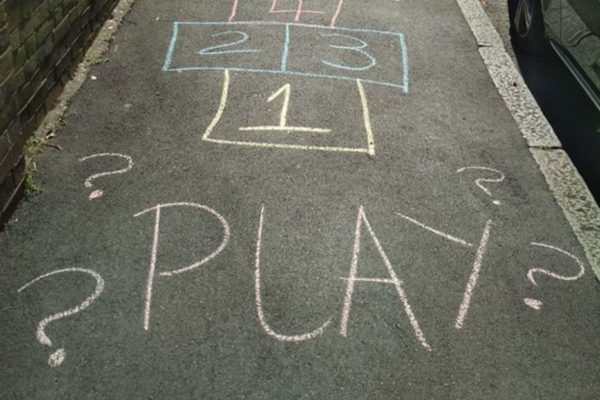Written by:
In the midst of a pandemic, public space takes on a new weight as we establish our relationship with the act of being outside.
A complex negotiation of ownership and authority is happening on our streets and in our public spaces.
Public parks. Those who have ‘the right’ to be using public parks during this crisis is poignant and complex. This weekend, I saw several couples relaxing on picnic blankets, enjoying the sun, eventually to be sent home by the police. Our behaviour raises questions about collective accountability, morality and fairness: exposing social division in terms of outlook to the crisis, but also regional differences and spatial inequalities. Meanwhile, the debate rages across the media and within households about whether any of us should be going outside at all unless we absolutely have to, even for a daily dose of state-sanctioned exercise.
Victoria Park in Hackney, East London. Opened in 1845, the park was founded as part of an initiative to provide green space to the growing suburbs of London. Labelled ‘the lungs of the East End’, it was immediately used by locals as a space for relaxation and leisure.
Many people living in dense and less affluent urban areas have no private access to outside space at all. Families with young children in crowded flats, amongst others, no doubt rely on parks remaining open to provide much needed outdoor time.
From the Interim London Housing Design Guide:
“Homes in the city should provide the opportunity to look out on and enjoy surrounding public and shared open spaces. At the same time, the home should be a comfortable, private setting for family and individual pursuits, social interaction and relaxation. Private outdoor space should also offer these qualities. People value highly the opportunity to relax outdoors without being seen by neighbours or passersby.” [1]
Cases of domestic violence have risen by 25%, as restrictions to movement can have harrowing implications [2]. It is also easy to say that those with private gardens should stay at home to make way for people without them but seeing activity from a distance, or spotting new things we may not previously have had time to notice helps to keep or even deepen our connection with people and places. Experiencing and moving through different environments is hugely important to our sense of wellbeing, and a luxury we may not always have appreciated quite so much.
As we navigate through and out of this crisis, we will have seen the shift from public spaces as communal assets, to places of danger and risk, but also respite, and back again.
Streets. Cars give way to pedestrians, dog-walkers give way to joggers, and young families give way to people who would usually be at their place of work. Play is visible, and reminds us that things will eventually return.
Front gardens. On my street, many front gardens have been paved, and used to store bins. Recently, I’ve noticed: new vegetable planters emerge, people reading on their front step in the evening sunlight, children playing in the gravel outside their house, and neighbours taking time to stop for a chat (at a safe distance).
Windows. The art galleries of 2020. They frame the view to the outside, but also frame the many colourful messages of kindness and support for the NHS.
Our relationship to gathering in large crowds, or collectively enjoying the park or the beach, could be significantly altered. The threat of restriction may bring placemaking and place quality higher on the national agenda. We may question with greater fervour the boundaries between public and private open spaces, or why so much is allocated to cars, rather than people.
In the meantime, here are some things that made me smile:
- Walking past a neighbour’s open window and seeing a family portrait emerge from an easel.
- Hello in five languages, each illustrated by the young inhabitants on a separate window pane.
- Watching the children of key workers play in the school playground opposite my window
- Watching the blossom tree blow petals down the road.
Share your ‘thing that made you smile’ with the hashtag #streetsmile, or email info@theglasshouse.org.uk
Grace Crannis is Outreach and Impact Manager at the Glass-House Community Led Design.
[1] London Development Agency, Interim Housing Design Guide, p.64, 2010
[2] As reported by By June Kelly and Tomos Morgan: ‘Coronavirus: Domestic abuse calls up 25% since lockdown, charity says‘, BBC News, 6 April 2020


